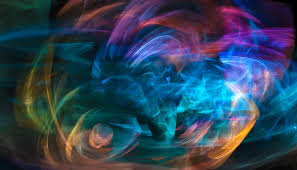
What Color was that Music?
Share
Music and colors have few, if any, sensory properties in common: Music is auditory and has properties such as tempo, pitch, timbre, and rhythm. Color is visual and has the properties of lightness, vividness, and hue. But both music and color map aspects of emotion.
But recent scientific evidence shows that the average person has music-to-color associations and a remarkably associative power of the human brain, and perhaps above all, underscoring the centrality of emotion in our mental lives.
Listen to these three clips and pick two colors for each.
Why do we choose the colors we do? An important part of the answer comes from certain features of the music itself. Fast paced music in a major mode tends to illicit bright vivid colors (the first clip-emotion excitement, happiness)). Fast-paced, complex, high-energy music with a driving beat and distorted sounds, such as Example 2, brings out reds and blacks more than any of the others (emotion anger, rage). Example 3, with relaxed tempo, consonant harmony evokes pastels colors (emotion peaceful, serenity).
As these brief descriptions imply, the musical features that matter most in determining the colors people choose include tempo (slow to fast), energy (low to high), volume (soft to loud), mode (minor to major), pitch (low to high), harmonic and melodic content (consonant to dissonant), complexity (simple to complex), and distortion (clear to distorted).
But there is another way to look at these choices, one that centers on emotion. Consider how you might describe the emotional qualities of the first four musical selections. Roughly speaking, Example A sounds happy and strong, Example B sounds sad and weak, Example C sounds angry and strong, and Example D sounds calm and a bit sad.
Why do we choose the colors we do? An important part of the answer comes from certain features of the music itself.
If colors have analogous emotional qualities, people might simply pick the colors whose emotion best matches that of the music. Look again at the color arrays and consider which one looks happiest, which looks saddest, which angriest, and which calmest. We had participants rate the happiness, sadness, angriness, and calmness of each of the 37 colors and then computed the average value of each emotion in the color choices they made for different musical clips.
Bibliography
1. http://nautil.us/issue/26/color/what-color-is-this-song

